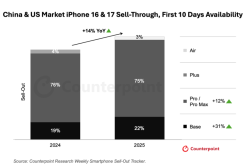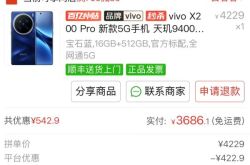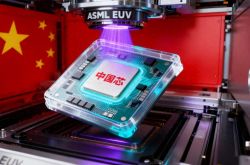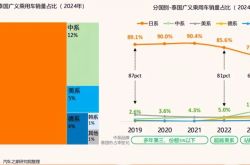Apple iPhone 17 Prices Plummet Below Official Launch Price: Can Scalpers Still Turn a Profit?
![]() 09/16 2025
09/16 2025
![]() 559
559
When Apple unveils new products, among the throngs of Apple aficionados, it's the scalpers of all sizes who are perhaps the most eager. Each Apple product launch presents a golden opportunity for scalpers to rake in the cash. Those who excel at this often see substantial profits. However, following the recent Apple product rollout, the heyday for scalpers seems to have come to an end. Shortly after the release, the latest iPhone 17 from Apple witnessed its prices dipping below the official launch price. This raises a pertinent question: Can scalpers still make a buck this time around?

I. Apple iPhone 17 Prices Slide Below Official Launch Price?
According to a report by China Business Network, the iPhone 17 hasn't even been officially put on sale, yet e-commerce platforms have already slashed the prices of the new series below the official tags.
A quick search on Pinduoduo reveals that its billion-dollar subsidy initiative has kicked off comprehensive subsidies for the iPhone 17 series. The page details show that with coupon adjustments, the iPhone 17 256GB can be had for as low as 5,099 yuan, the iPhone 17 Pro 256GB for a mere 8,099 yuan, and the iPhone 17 Pro Max 256GB at 9,099 yuan. These prices are available upon coupon redemption at specific times, with each model priced roughly 900 yuan less than the official rates.
Accompanying the new product launch, e-commerce platforms are engaged in a fierce battle to woo iPhone 17 users. Previously, the official Tmall Apple Store and the JD.com Apple product self-operated flagship store started taking pre-orders for the new devices. JD.com data indicates that within six hours of pre-order initiation, the total number of pre-orders for the iPhone 17 series surpassed 2 million. Tmall data shows that on the first day of listing, pre-orders for the entire iPhone 17 series on Tmall nearly tripled compared to the initial release period of the previous iPhone 16 series, with the white iPhone 17 model garnering the most pre-orders. In response to the iPhone 17 release, Tmall and JD.com have rolled out promotional activities such as national subsidies saving 500 yuan, trade-in offers, and 24-period interest-free installments. Now, Pinduoduo has taken the price war for the iPhone 17 to a whole new level.

II. Why Can't Scalpers Profit Anymore?
In recent years, new iPhone releases were once the 'golden ticket' for scalpers. However, the phenomenon of the iPhone 17 series prices dropping below the official launch price immediately after release signals the complete collapse of this traditional arbitrage model. What exactly went wrong?
Firstly, why were there so many arbitrage opportunities for scalpers with iPhones? In the early days, the release of new iPhone models saw a surge in market demand. As a global leader in the smartphone industry, Apple's brand influence is unparalleled. Each new iPhone release generates significant buzz and anticipation among consumers. Factors such as consumers' quest for the latest technology, loyalty to the Apple brand, and social status considerations collectively fuel robust market demand.
However, Apple's production capacity struggled to keep pace with the soaring market demand in a timely fashion. From an industrial economics standpoint, smartphone production entails a complex supply chain system, encompassing the supply of components like chips, screens, and cameras, as well as production line adjustments and capacity ramp-ups. Although Apple boasts strong supply chain management capabilities, it still faces challenges in swiftly meeting the enormous global demand during the initial release period of new products.
During this time lag, scalpers were quick to seize business opportunities. They capitalized on consumers' eagerness to own new products at the earliest opportunity by stockpiling inventory in advance and then selling it on the market at prices higher than the official retail price, thus reaping a profit margin. This arbitrage behavior was prevalent during the release of new iPhone models in earlier years, and scalpers made substantial profits as a result.

Secondly, what are the reasons for the disappearance of premium pricing for new iPhone releases nowadays? Nowadays, replicating the past premium pricing phenomenon during new iPhone releases is a tough ask, with instances of prices dropping below the official launch price even cropping up. This situation stems primarily from two factors.
On one hand, Apple's innovation has hit a bit of a rough patch in recent years, leading to a gradual decline in market appeal. From an industrial development perspective, innovation is the cornerstone of sustained corporate growth. During the early stages of smartphone industry development, Apple quickly captured a significant share of the high-end market with its unique design, innovative features, and stellar user experience. However, in recent years, Apple's pace of innovation has slowed down. Each new iPhone iteration primarily offers minor performance enhancements rather than groundbreaking innovative features.
In contrast, manufacturers in the Android camp have been continuously innovating in areas such as photography, fast charging, and screens, launching a plethora of competitive products. Moreover, in the Chinese market, Huawei has emerged as a formidable contender, particularly with a series of models following the Mate 60 Pro, whose demand even outstrips that of Apple. This has dampened consumers' expectations for new iPhone releases, resulting in weaker market demand compared to earlier years.
On the other hand, the rise of e-commerce platforms, exemplified by Pinduoduo, has reshaped the competitive landscape of the market. Leveraging its strong channel advantages, Pinduoduo can secure new iPhone models earlier. By forging close cooperative relationships with suppliers and optimizing supply chain management, e-commerce platforms enhance their efficiency in obtaining inventory. Simultaneously, Pinduoduo's billion-dollar subsidy program further drives down the selling prices of new iPhone models. Under the pressure from e-commerce platforms, the premium pricing advantage of new iPhone models is swiftly eroded. Consumers can now purchase new iPhone models at prices close to or even lower than the official retail price through e-commerce platforms, eliminating the need to buy from scalpers at inflated prices.

Thirdly, the decline of the scalper group in the iPhone market is an inevitable trend. The decline of the scalper group in the iPhone market is essentially a 'market clearance' process driven by business model innovation. This phenomenon is akin to the sharp decline in the number of street thieves following the widespread adoption of mobile payments. Technological advancements and system upgrades have transformed the underlying ecosystem, rendering obsolete the parasitic models of the past.
In the era dominated by physical retail, scalpers constructed temporary 'secondary markets' by leveraging their control over offline store quotas and organizing queues. However, the intervention of e-commerce platforms, particularly those like Pinduoduo that prioritize 'ultimate cost-effectiveness' as their core competitiveness, has enabled rapid integration and large-scale distribution of new product resources through capital subsidies and digital supply chains.
This 'platform subsidy + direct supply from the source' model not only outpaces individual scalpers in efficiency but also overwhelms them in terms of pricing. Scalpers simply can't compete with platforms in terms of supply speed or offer attractive pricing, thereby having their profit margins completely squeezed.

It can be said that for the current market, innovative business models can genuinely drive the market towards better development. Pinduoduo's triumph over scalpers serves as a prime example. The advantage of e-commerce platforms, exemplified by Pinduoduo, lies in their ability to break traditional sales channels and pricing systems through innovative business models, providing consumers with a superior, convenient, and cost-effective shopping experience.
In the long run, new e-commerce strategies not only help enterprises gain a competitive edge but also promote the healthy development of the entire industry. Competition among e-commerce platforms compels enterprises to continually improve product quality and service levels while reducing prices, thereby benefiting consumers. Simultaneously, innovative business models can drive the optimization and upgrading of supply chains, enhancing overall industry efficiency. This represents the true imperative of e-commerce market development.
In the entire market, only business models that continuously reduce transaction costs possess genuine long-term value. This is the inevitable trend of era development.








